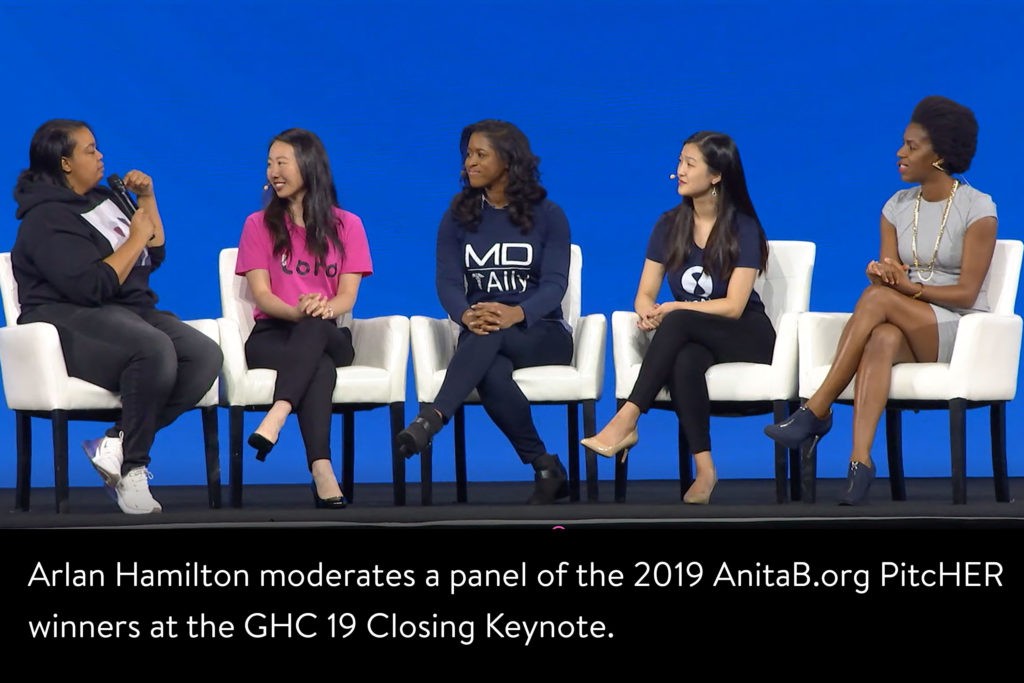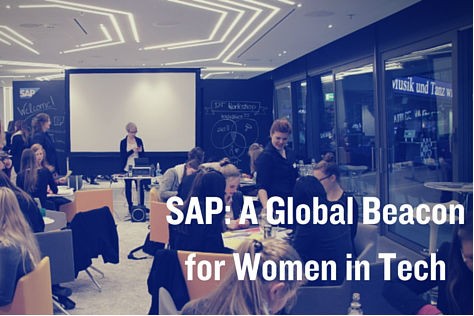SAP: A Global Beacon For Women in Tech

SAP: A Global Beacon For Women in Tech
For many women in tech, workplace cultures can pose a major hurdle to feeling supported, included and promoted within their organizations. To combat these challenges, SAP, a global business applications firm, has taken important steps to promote diversity and inclusion across its 77,000 employees and 130 offices. One critical step was becoming the first technology company in the U.S. to be awarded the Economic Dividends for Gender Equality (EDGE) certification. EDGE is the only certification for gender equality that takes into account both qualitative and quantitative metrics.
We sat down with Nicole McCabe, Senior Director of Global Diversity & Inclusion and Gender Equality at SAP, to learn more about the EDGE certification and other initiatives that promote gender diversity at SAP. This interview has been edited for length and clarity.
What is the EDGE certification, and why is it so important to SAP’s efforts around advancing women in tech?
EDGE is the only certification for gender equality that exists with an established methodology across many different dimensions including recruitment, talent development, policies and company culture.
The EDGE process is different because they have established a robust methodology, and they have established standards for what it takes to achieve gender equality in an organization. After the in-depth analysis, companies are able to see areas of opportunity within their own organization as well as how they compare to the global standard. Based on our unique results, EDGE made clear recommendations for how our organization can better promote gender equality.
To get certified, you need to select at least three recommendations from the list and create an action plan to address the areas of opportunity. This part of the process is critical in ensuring that the work does not stop – that we are constantly striving for gender equality. After you get your certification, you must be recertified every two years. Part of that recertification process is making sure you’re acting on the action items and the action plan that has been created.
For us, it was really important to have holistic insight into how an unbiased third party views SAP on issues such as recruitment, talent development, flexible work options and equal opportunities for career advancement. To have someone look at the programs that we have, our data and the perception of our employees on the same topics at the same time really helped to identify areas of opportunity.
What other initiatives has SAP taken to help women in tech?
In 2011, our board defined a target of having 25 percent women in leadership in 2017. At the time, women were just under 19 percent at the leadership level. We asked ourselves, “What do we need to do to meet this goal?” The answer was quite a lot. We needed to enable and empower our employees while at the same time re-engineering some of our processes. We had to understand gaps and get focused on impact-driven activities. And most importantly, we needed the support of the board, which, fortunately, we already had. In the end, we created a holistic strategy that would not only drive results but would also be sustainable.
We’ve created a lot of programs to help develop and engage women technicians. One of the programs that we created is the award-winning program, LEAP (Leadership Excellence Acceleration Program). It’s a virtualized career acceleration program for women to reflect and develop the skills they need to move forward into people management. The program was piloted in 2012 in the U.S. and has since been rolled out globally.
In 2014, I launched the Women’s Professional Growth Webinar series to cover topics that would support the career development of women. These simple webinars are designed to inform employees about the resources available to them, empower them with relevant skills and knowledge, and engage them in honest conversations with our top leaders. We have had close to 9,000 participants in our webinars since launching in March 2014. The unique thing about the webinar series was that instead of bringing an expert in to talk about these topics, we relied on our own female executives from SAP. This addressed a problem we had repeatedly encountered: many women simply didn’t have exposure to our executive women, so they didn’t always feel like they could aspire to that level. The webinars are also centralized on a single virtual platform entitled Women@SAP. Today, we have nearly 10,000 members that engage in conversations, ask questions and share stories, articles and research with each other.
Another key initiative was partnering with our Business Women’s Network (BWN), which is over 8,000 members and 32 chapters strong. Through alignment with the Global Diversity & Inclusion Office, the BWN has continued to grow and drive impact across our global organization.
What changes have you seen since SAP began these initiatives aimed at women in tech?
We’ve really progressed from two years ago. Before, honestly, I didn’t see a lot of care for one another. There was only so much room at the top, so the mentality for many female workers was one of solidarity as opposed to camaraderie. I observed this changing over the past several years, where women want to see each other be successful and will support them where possible. I credit some of this to our amazing leaders at SAP who are really committed to giving back and developing the next generation of leaders.
The webinars, significant developmental programs, our Business Women’s Network and the EDGE certification have all helped to create a more inclusive culture at SAP. Women trust each other more because they’re having honest conversations with their team and with themselves. All of this support by the right processes, programs and people will help us achieve sustainable gender equality. At the beginning of 2016, we had 23.6% women in leadership, nearly a 5% increase since the target was first established. I think this is the result of not a single program but of a holistic strategic approach that targets processes, programs and most importantly the people.
Image courtesy of SAP.

